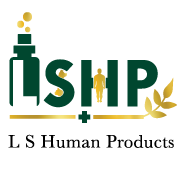Clubfoot

A “clubfoot” or “ equinovarus” is a type of foot that does not rest on the ground normally. This type of foot deformity occurs when the foot involuntarily appears flexed to one side (inward and/or downward). It may occur randomly in one or both feet.
It is a congenital deformity, that is, one is born with this pathology.
Although the term "clubfoot" can theoretically be applied to any foot deformity, in practice it is used to define the malformation associated with the following deformities: equinus , varus , adductus , cavus , and internal rotation of the tibia . This foot deformity occurs when tight tendons and ligaments prevent the foot from stretching into the correct position.
Clubfoot or congenital equinovarus foot is a malformation consisting of a three-dimensional deformity of the foot in which the bone structures are altered in their shape and in the orientation of their articular profiles. Clinically, it presents with "equinism" , "varismus" , and supination of the hindfoot, and adduction of the forefoot.
Diagnosis of clubfoot
Clubfoot equinovarus is often recognized by a doctor shortly after birth simply by observing the shape and positioning of the newborn's foot. Occasionally, a doctor may order X-rays to determine the exact severity of the clubfoot equinovarus , but X-rays are usually not necessary.
In most cases , clubfoot equinovarus can be clearly recognized before birth through a routine ultrasound beginning in the 20th week of pregnancy. Although no measures can be taken to resolve the problem before birth, being aware of the condition can give you time to gather all the information about clubfoot equinovarus and consult with appropriate health experts, such as a pediatric orthopedic surgeon and a genetic counselor.
Clubfoot treatment
Because a newborn's bones, joints, and tendons are flexible enough, treatment for clubfoot usually begins one to two weeks after birth. The goal of treatment is to improve the appearance and function of the child's foot before the child learns to walk, in the hope of preventing long-term disabilities.
Some treatment options are:
- Stretching and a cast (Ponseti method)
- Surgery
Stretching and casting (Ponseti method)
This is the most common treatment for clubfoot . Your doctor will do the following:
- He or she will move the baby's foot into a correct position and then place it in a cast to keep it in place.
- Reposition and recast the baby's foot once a week for several months
- He will perform a minor surgical procedure to lengthen the Achilles tendon ( percutaneous Achilles tendon tenotomy ) toward the end of this process.
After you have realigned the shape of your baby's foot, you may be able to maintain it by one or more of the following methods:
- Do stretching exercises with the baby
- Put on special shoes, such as “ THERAPEUTIC AND BIOMECHANICAL BOCCIO FOOTWEAR ” and immobilization devices
- Parents should ensure that their child wears “ THERAPEUTIC AND BIOMECHANICAL BOCCIO FOOTWEAR ” shoes and immobilization devices for as long as necessary, usually all the time for three months and then at night and during nap times for up to three years.
For this method to be successful, parents must apply immobilization devices following the doctor's instructions to prevent the foot from returning to its original position. The main reason this procedure sometimes fails is that immobilization devices are not used according to the doctor's instructions.
Clubfoot surgery
If a baby's clubfoot is severe or doesn't respond to nonsurgical treatments, more invasive surgery may be required. An orthopedic surgeon can lengthen or reposition tendons and ligaments to help move the foot into a better position. After surgery, the baby will be in a cast for up to two months, and then will need to wear an immobilization device for approximately a year to prevent clubfoot equinovarus from recurring.
Even with treatment, clubfoot equinovarus may not be fully correctable. However, in most cases, babies treated early have the option of wearing " Therapeutic and Biomechanical Boccia Footwear ," shoes tailored to each patient's individual needs. These shoes are made with 100% natural, comfortable materials and are specifically designed for these types of situations, allowing them to lead full, active lives when they grow up.
